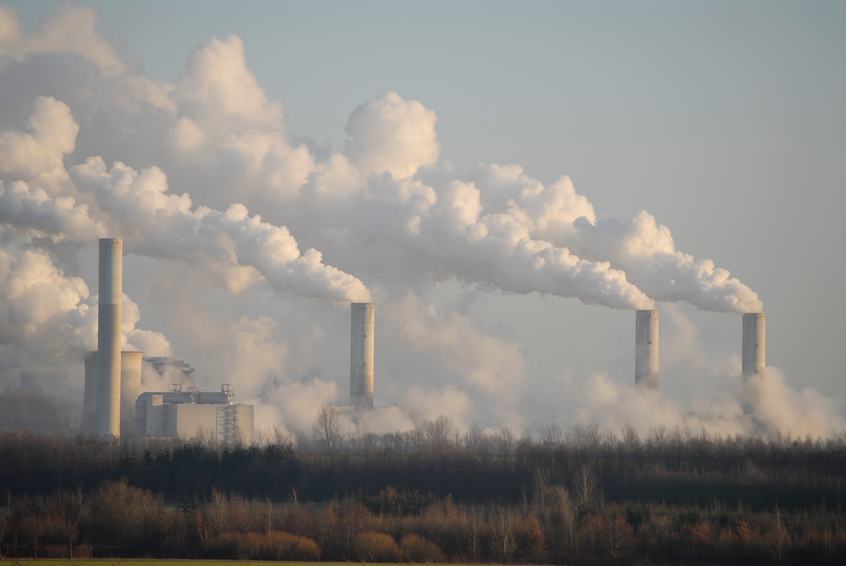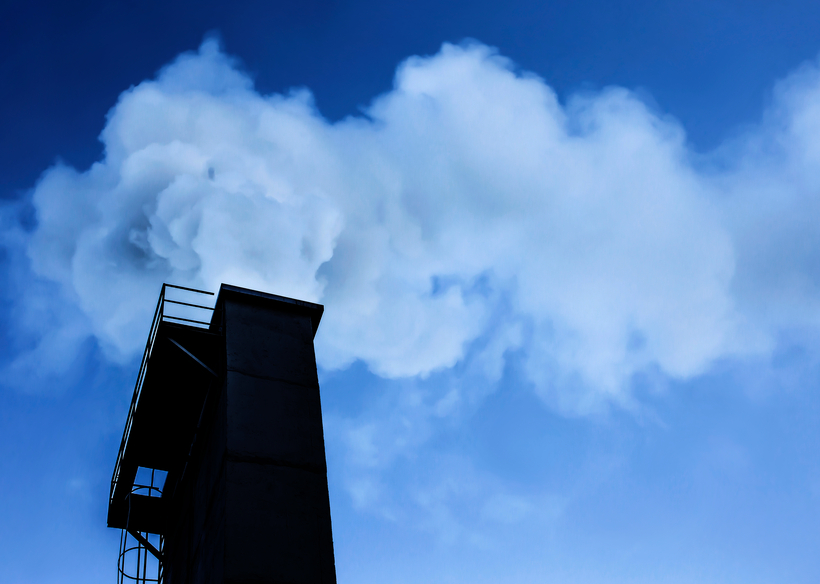Air Pollution 12 PDH Discount Package
Selecting the Best Air Pollution Control Strategy (C03-012)
Overview of Odors (C02-043)
Estimating Air Emission Rates (C02-011)
Selection Tips for Environmentally Safe Refrigerants (C02-026)

This online engineering PDH course begins with a thorough explanation of the background and history of air quality engineering, followed by discussions of what we know about air emissions, different ways they are calculated, air pollution control (APC) technologies and strategies, factors involved in their ground-level concentrations, and potential health impacts and ways to regulate air emissions. The course is designed to help you understand the basics of air quality engineering and understand its particular language, terms, and approaches.
Air quality is a major area of importance in environmental engineering. Contaminants emitted along an air pathway from industry have been shown to have a major adverse public health effect worldwide. As a result, many government agencies are promulgating and enforcing strict air quality rules, and industrial facilities are employing environmental engineers to minimize emissions, impacts, and exposure to the public. Growing research and case studies have demonstrated a greater understanding of air quality engineering. Strategies and technologies exist to accomplish these goals. There are few "black and white" solutions, however. Engineering decisions to reduce air emissions and impacts draw upon a strong understanding of the technologies available, their effectiveness, cost, and capability of causing auxiliary production and environmental problems.
This 3 PDH online course is intended for environmental engineers, design professionals, APC equipment manufacturers, machinists, inspectors, and construction workers who are interested in gaining a better understanding in air quality.
This PE continuing education course is intended to provide you with the following specific knowledge and skills:
- Understand the nature and classes of different air pollutants
- Define the different types of emissions into the atmosphere
- Determine the different factors involved in determining ground-level concentrations (impacts) of air pollutants
- Understand the basic key exposures to air pollutants affecting public health
- Understand the basic public health effects of different types of air pollutants
- Learn the history of air pollutant regulations and their effects on industry and public health
- Learn about special topics related to regulating air pollution
In this professional engineering CEU course, you need to review the course document titled "Air Quality Fundamentals".
Upon successful completion of the quiz, print your Certificate of Completion instantly. (Note: if you are paying by check or money order, you will be able to print it after we receive your payment.) For your convenience, we will also email it to you. Please note that you can log in to your account at any time to access and print your Certificate of Completion.

This online engineering PDH course provides guidance on how to approach the need to reduce air emissions from your sources, an area of growing concern. It describes the initial approach to reducing air emissions, such as understanding applicable air regulations and air permits to determine which pollutants must be reduced and by how much. The best method to reduce air emissions is to optimize your processes so that your facility is producing fewer emissions. When this is no longer feasible, end-of-pipe technologies are necessary.
This course also presents the factors and information necessary to determine whether a strategy is technically feasible in your application or not. It provides an overview of a number of conventional air pollution control equipment, their advantages and disadvantages, as well as basic information necessary for their design.
This 3 PDH online course is applicable to chemical and environmental engineers as well as energy professionals involved with the compliance of air quality regulations and permits and the implementation of air pollution minimization programs.
This PE continuing education course is intended to provide you with the following specific knowledge and skills:
- Learning how to review your air permits and applicable regulations to determine which pollutants emission rates need to be reduced and by how much
- How to implement a "Pollution Prevention" program
- Understanding the type of data needed to evaluate which air pollution control strategy is most appropriate technically for your source
- Understanding the advantages and disadvantages of a number of major air pollution control equipment types
- Understanding major design information necessary for the equipment to be effective in your application
In this professional engineering CEU course, you need to review the course document titled "Selecting the Best Air Pollution Control Strategy".
Upon successful completion of the quiz, print your Certificate of Completion instantly. (Note: if you are paying by check or money order, you will be able to print it after we receive your payment.) For your convenience, we will also email it to you. Please note that you can log in to your account at any time to access and print your Certificate of Completion.

This online engineering PDH course provides guidance on a common problem facing environmental engineers and that is how to evaluate and treat an odor problem. Odors are not always toxic, but the nature of odors often causes people to act emotionally and demand that the source be eliminated. However, the nature of odorous compounds is that even a very low concentration can trigger detection or other reaction.
This course describes the nature of odorous compounds, how they are detected, their typical sources, and approaches and technologies commonly used to control them. It presents the factors and information necessary to assess an odor situation and how to approach it. It provides an overview of how to proceed in treating an odor episode and presents real life situations.
This 2 PDH online course is applicable to chemical and environmental engineers involved at the facility level to determine how to technically approach an odor episode and treat it effectively.
This PE continuing education course is intended to provide you with the following specific knowledge and skills:
- Familiarizing with the nature of odorous compounds
- Understanding the basic characteristics of odors
- Learning about the different sources of odors and the corresponding types of odorous compounds
- Learning how to approach remediating an odor problem once it is detected
- Learning about common odor control technologies to properly solve the odor problem
In this professional engineering CEU course, you need to review the course document titled "Overview of Odors".
Upon successful completion of the quiz, print your Certificate of Completion instantly. (Note: if you are paying by check or money order, you will be able to print it after we receive your payment.) For your convenience, we will also email it to you. Please note that you can log in to your account at any time to access and print your Certificate of Completion.

This online engineering PDH course begins with an explanation of the background and importance of air emission estimations, followed by discussions of the four major types of air emission estimation techniques, their advantages and disadvantages, and the data needs for each. The course concludes with some tips for managing an overall air emission estimation program.
Federal and state air quality regulations contain, for the most part, standards involving emission rates. A process or a type of equipment must meet an emission rate limit to comply with the rule. Therefore, estimation of air emission rates is critical for regulatory compliance as well as for planning. There is no set method to estimate emissions. What works for one type of process will not work for a different one. Also different estimation techniques have different accuracies, costs, interpretations, and data required for different processes. Engineering understanding of the techniques where they are best applicable and the quality data needed to make them successful is critical to developing reliable emission estimates. Such estimates can be used to accurately determine compliance with regulations, to develop total emissions inventory, to perform ground-level impact studies, and to size and design air pollution control equipment.
This 2 PDH online course is intended for environmental engineers, chemical and process engineers, and APC equipment designers who are interested in gaining a better understanding of how air emissions are estimated and the criteria set by the engineer performing the estimations.
This PE continuing education course is intended to provide you with the following specific knowledge and skills:
- Understand the need to estimate rates of air emissions into the atmosphere.
- Understand the basics of the four major approaches to estimate emissions.
- Determine for which processes one approach may be favorable over another.
- Learn about the technologies used to perform direct measurements of emissions and their limitations.
- Learn about the background of material balance and engineering equations to estimate emissions of different types of air pollutants.
- Learn tips of what to do to make your emission estimation program proceed smoother.
In this professional engineering CEU course, you need to review the course document titled "Estimating Air Emission Rates".
Upon successful completion of the quiz, print your Certificate of Completion instantly. (Note: if you are paying by check or money order, you will be able to print it after we receive your payment.) For your convenience, we will also email it to you. Please note that you can log in to your account at any time to access and print your Certificate of Completion.

This online engineering PDH course provides guidance on the responsible use and selection of refrigerants in vapor compression refrigeration systems. The thermodynamic efficiency of a refrigeration system depends mainly on its operating temperatures. However, important practical issues such as the system design, size, initial and operating costs, safety, reliability, and serviceability etc. depend very much on the type of refrigerant selected for a given application.
Due to several environmental issues such as ozone layer depletion and global warming and their relation to the various refrigerants used, the selection of suitable refrigerant has become one of the most important issues in recent times. Replacement of an existing refrigerant by a completely new refrigerant, for whatever reason, is an expensive proposition as it may call for several changes in the design and manufacturing of refrigeration systems. Hence it is very important to understand the issues related to the selection and use of refrigerants.
This 2 PDH online course is applicable to HVAC engineers, facility engineers, architects, environmentalists, operations and maintenance personnel, as well as consultants and contractors who construct, build and manage facilities.
This PE continuing education course is intended to provide you with the following specific knowledge and skills:
- Understanding the differences between primary and secondary refrigerants
- Understanding the phenomenon of ozone layer depletion and its relationship to various refrigerants
- Understanding the criteria used in refrigerant selection
- Understanding the thermo-physical, environmental and economic properties of refrigerants
- Understanding the numbering system used for designating refrigerants
- Understanding the international treaties and regulation in force on choice of refrigerants
- Understanding the available options for the replacements for CFCs and HCFCs
In this professional engineering CEU course, you need to review the course document titled "Selection Tips for Environmentally Safe Refrigerants".
Upon successful completion of the quiz, print your Certificate of Completion instantly. (Note: if you are paying by check or money order, you will be able to print it after we receive your payment.) For your convenience, we will also email it to you. Please note that you can log in to your account at any time to access and print your Certificate of Completion.